Articles and Company News
We aim to keep our clients up-to-date with news and relevant opinions which concern your finances. Our regular email bulletin is designed to inform and share views with our members.
2024
RBA Media Release, November 2024
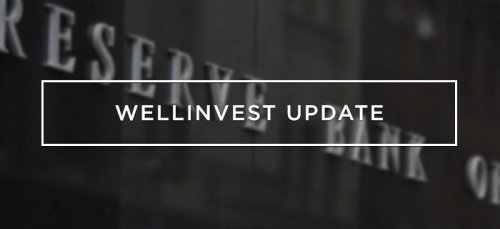
Statement by the Reserve Bank Board: Monetary Policy Decision
At its meeting today, the Board decided to leave the cash rate target unchanged at 4.35 per cent and the interest rate paid on Exchange Settlement balances unchanged at 4.25 per cent.
Underlying inflation remains too high.
Inflation has fallen substantially since the peak in 2022, as higher interest rates have been working to bring aggregate demand and supply closer towards balance. Headline inflation was 2.8 per cent over the year to the September quarter, down from 3.8 per cent over the year to the June quarter. This was as expected due to declines in fuel and electricity prices in the September quarter. But part of this decline reflects temporary cost of living relief. Abstracting from these effects, underlying inflation (as represented by the trimmed mean) was 3.5 per cent over the year to the September quarter. This was as forecast but is still some way from the 2.5 per cent midpoint of the inflation target. The forecasts published in today’s Statement on Monetary Policy (SMP) do not see inflation returning sustainably to the midpoint of the target until 2026.
The outlook remains highly uncertain.
The forecasts published today are very similar to those published in August. The forecast path for underlying inflation reflects a judgement that aggregate demand remains above the economy’s supply capacity, evidenced by the persistence of underlying inflation, surveys of business conditions and ongoing strength in the labour market.
Growth in output has been weak. Past declines in real disposable incomes and the ongoing effect of restrictive financial conditions continue to weigh on household consumption, particularly discretionary consumption. However, growth in aggregate consumer demand, which includes spending by temporary residents such as students and tourists, has remained more resilient.
A range of indicators suggest that labour market conditions remain tight, and while conditions have been easing gradually, some indicators have recently stabilised. Employment grew strongly over the three months to September, by an average of 0.4 per cent per month. The unemployment rate was 4.1 per cent in September, up from the trough of 3.5 per cent in late 2022. But the participation rate remains at record highs, vacancies are still elevated and average hours worked have stabilised. At the same time, some cyclical measures of the labour market including youth unemployment and underemployment have recently declined.
Wage pressures have eased somewhat but labour productivity is still only at 2016 levels, despite the pick-up over the past year.
Taking account of recent data and the updated forecasts, the Board’s assessment is that policy is currently restrictive and working broadly as anticipated. But there are uncertainties. The central projection is for growth in household consumption to increase from the second half of this year as income growth picks up – and there is tentative evidence of an increase in spending in the September quarter. But there is a risk that any pick-up is slower than expected, resulting in continued subdued output growth and a sharper deterioration in the labour market. More broadly, there are uncertainties regarding the lags in the effect of monetary policy and how firms’ pricing decisions and wages will respond to the slow growth in the economy and weak productivity outcomes at a time of excess demand, and while conditions in the labour market remain tight.
There remains a high level of uncertainty about the outlook abroad. Most central banks have eased monetary policy as they become more confident that inflation is moving sustainably back towards their respective targets. They note, however, that they are removing only some restrictiveness and remain alert to risks on both sides, namely weaker labour markets and stronger inflation. Public authorities in China have responded to the weak outlook for economic activity by implementing more expansionary policies, although the impact (and in some cases the specific details) of these measures remains to be seen. Geopolitical uncertainties remain pronounced.
Sustainably returning inflation to target is the priority.
Sustainably returning inflation to target within a reasonable timeframe remains the Board’s highest priority. This is consistent with the RBA’s mandate for price stability and full employment. To date, longer term inflation expectations have been consistent with the inflation target and it is important that this remains the case.
While headline inflation has declined substantially and will remain lower for a time, underlying inflation is more indicative of inflation momentum, and it remains too high. The November SMP forecasts suggest that it will be some time yet before inflation is sustainably in the target range and approaching the midpoint. This reinforces the need to remain vigilant to upside risks to inflation and the Board is not ruling anything in or out. Policy will need to be sufficiently restrictive until the Board is confident that inflation is moving sustainably towards the target range.
The Board will continue to rely upon the data and the evolving assessment of risks to guide its decisions. In doing so, it will pay close attention to developments in the global economy and financial markets, trends in domestic demand, and the outlook for inflation and the labour market. The Board remains resolute in its determination to return inflation to target and will do what is necessary to achieve that outcome.
2024
RBA Media Release, September 2024
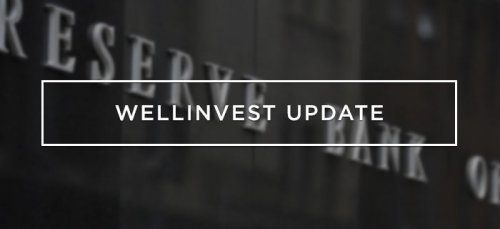
Statement by the Reserve Bank Board: Monetary Policy Decision
At its meeting today, the Board decided to leave the cash rate target unchanged at 4.35 per cent and the interest rate paid on Exchange Settlement balances unchanged at 4.25 per cent.
Inflation remains above target and is proving persistent.
Inflation has fallen substantially since the peak in 2022, as higher interest rates have been working to bring aggregate demand and supply closer towards balance. But inflation is still some way above the midpoint of the 2–3 per cent target range. In underlying terms, as represented by the trimmed mean, inflation was 3.9 per cent over the year to the June quarter, broadly as forecast in the May Statement on Monetary Policy (SMP). Headline inflation declined in July, as measured by the monthly CPI indicator. Headline inflation is expected to fall further temporarily, as a result of federal and state cost of living relief. However, our current forecasts do not see inflation returning sustainably to target until 2026. In year-ended terms, underlying inflation has been above the midpoint of the target for 11 consecutive quarters and has fallen very little over the past year.
The outlook remains highly uncertain.
The central forecasts published in August were for underlying inflation to return to the target range of 2–3 per cent late in 2025 and approach the midpoint in 2026. This reflected a judgement that the economy’s capacity to meet demand was somewhat weaker than previously thought, evidenced by the persistence of inflation and ongoing strength in the labour market.
Since then, GDP data for the June quarter have confirmed that growth has been weak. Earlier declines in real disposable incomes and the ongoing effect of restrictive financial conditions continue to weigh on consumption, particularly discretionary consumption. However, growth in aggregate consumer demand, which includes spending by temporary residents such as students and tourists, remained more resilient.
Wage pressures have eased somewhat but labour productivity is still only at 2016 levels, despite the pickup over the past year.
Broader indicators suggest that labour market conditions remain tight, despite some signs of gradual easing. Over the three months to August, employment grew on average by 0.3 per cent per month. The unemployment rate remained at 4.2 per cent in August, up from the trough of 3.5 per cent in mid-2023. But the participation rate remains at record highs, vacancies remain elevated and average hours worked have stabilised.
Taken together, the latest data do not change the Board’s assessment at the August meeting that policy is currently restrictive and working broadly as anticipated. But there are uncertainties. The central projection is for household consumption growth to pick up in the second half of the year as the headwinds to income growth recede – but there is a risk that this pickup is slower than expected, resulting in continued subdued output growth and a sharper deterioration in the labour market. More broadly, there are uncertainties regarding the lags in the effects of monetary policy and how firms’ pricing decisions and wages will respond to the slower growth in the economy at a time of excess demand, and while conditions in the labour market remain tight.
There also remains a high level of uncertainty about the outlook abroad. Some central banks have eased policy, although they note that they are removing only some restrictiveness and remain alert to risks on both sides, namely weaker labour markets and stronger inflation. The outlook for the Chinese economy has softened and this has been reflected in commodity prices. Geopolitical uncertainties remain pronounced.
Returning inflation to target is the priority.
Sustainably returning inflation to target within a reasonable timeframe remains the Board’s highest priority. This is consistent with the RBA’s mandate for price stability and full employment. To date, longer term inflation expectations have been consistent with the inflation target and it is important that this remain the case.
While headline inflation will decline for a time, underlying inflation is more indicative of inflation momentum, and it remains too high. The most recent projections in the August SMP show that it will be some time yet before inflation is sustainably in the target range. Data since then have reinforced the need to remain vigilant to upside risks to inflation and the Board is not ruling anything in or out. Policy will need to be sufficiently restrictive until the Board is confident that inflation is moving sustainably towards the target range.
The Board will continue to rely upon the data and the evolving assessment of risks to guide its decisions. In doing so, it will pay close attention to developments in the global economy and financial markets, trends in domestic demand, and the outlook for inflation and the labour market. The Board remains resolute in its determination to return inflation to target and will do what is necessary to achieve that outcome.
2024
RBA Media Release, August 2024
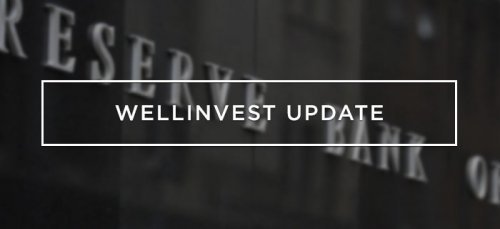
Statement by the Reserve Bank Board: Monetary Policy Decision
At its meeting today, the Board decided to leave the cash rate target unchanged at 4.35 per cent and the interest rate paid on Exchange Settlement balances unchanged at 4.25 per cent.
Inflation remains above target and is proving persistent.
Inflation has fallen substantially since its peak in 2022, as higher interest rates have been working to bring aggregate demand and supply closer towards balance. But inflation is still some way above the midpoint of the 2–3 per cent target range. In underlying terms, as represented by the trimmed mean, the CPI rose by 3.9 per cent over the year to the June quarter, broadly as forecast in the May Statement on Monetary Policy (SMP). But the latest numbers also demonstrate that inflation is proving persistent. In year-ended terms, underlying inflation has now been above the midpoint of the target for 11 consecutive quarters. And quarterly underlying CPI inflation has fallen very little over the past year.
The outlook remains highly uncertain.
The economic outlook is uncertain and recent data have demonstrated that the process of returning inflation to target has been slow and bumpy.
The central forecasts set out in the latest SMP are for inflation to return to the target range of 2–3 per cent late in 2025 and approach the midpoint in 2026. This represents a slightly slower return to target than forecast in May, based on estimates that the gap between aggregate demand and supply in the economy is larger than previously thought. In part, this reflects an increase in the forecast for domestic demand. But it also reflects a judgement that the economy’s capacity to meet that demand is somewhat weaker than previously thought, evidenced by the persistence of inflation and ongoing strength in the labour market.
There is substantial uncertainty around these forecasts. Revisions to consumption and the saving rate in the most recent National Accounts, high unit labour costs and the persistence of inflation – particularly in the services sector – suggest there are upside risks to inflation. Wages growth appears to have peaked but is still above the level that can be sustained given trend productivity growth.
On the other hand, momentum in economic activity has been weak, as evidenced by slow growth in GDP, a rise in the unemployment rate and reports that many businesses are under pressure. And there is a risk that household consumption picks up more slowly than expected, resulting in continued subdued output growth and a noticeable deterioration in the labour market.
More broadly, there are uncertainties regarding the lags in the effect of monetary policy and how firms’ pricing decisions and wages will respond to the slower growth in the economy at a time of excess demand, and while conditions in the labour market remain tight.
There also remains a high level of uncertainty about the overseas outlook. The outlook for the Chinese economy has softened and this has been reflected in commodity prices. Some central banks have eased policy, although they remain alert to the risk of persistent inflation. Globally, financial markets have been volatile of late and the Australian dollar has depreciated. Geopolitical uncertainties remain elevated, which may have implications for supply chains.
Returning inflation to target is the priority.
Returning inflation to target within a reasonable timeframe remains the Board’s highest priority. This is consistent with the RBA’s mandate for price stability and full employment. To date, longer-term inflation expectations have been consistent with the inflation target and it is important that this remain the case.
Inflation in underlying terms remains too high, and the latest projections show that it will be some time yet before inflation is sustainably in the target range. Data have reinforced the need to remain vigilant to upside risks to inflation and the Board is not ruling anything in or out. Policy will need to be sufficiently restrictive until the Board is confident that inflation is moving sustainably towards the target range.
The Board will rely upon the data and the evolving assessment of risks to guide its decisions. In doing so, it will continue to pay close attention to developments in the global economy and financial markets, trends in domestic demand, and the outlook for inflation and the labour market. The Board remains resolute in its determination to return inflation to target and will do what is necessary to achieve that outcome.
2024
RBA Media Release, May 2024

Statement by the Reserve Bank Board: Monetary Policy Decision
At its meeting today, the Board decided to leave the cash rate target unchanged at 4.35 per cent and the interest rate paid on Exchange Settlement balances unchanged at 4.25 per cent.
Inflation remains high and is falling more gradually than expected.
Recent information indicates that inflation continues to moderate, but is declining more slowly than expected. The CPI grew by 3.6 per cent over the year to the March quarter, down from 4.1 per cent over the year to December. Underlying inflation was higher than headline inflation and declined by less. This was due in large part to services inflation, which remains high and is moderating only gradually.
Higher interest rates have been working to bring aggregate demand and supply somewhat closer towards balance. But the data indicate continuing excess demand in the economy, coupled with strong domestic cost pressures, both for labour and non-labour inputs. Conditions in the labour market have eased over the past year, but remain tighter than is consistent with sustained full employment and inflation at target. Wages growth appears to have peaked but is still above the level that can be sustained given trend productivity growth. Meanwhile, inflation is still weighing on people’s real incomes and output growth has been subdued, reflecting weak household consumption growth.
The outlook remains highly uncertain.
The economic outlook remains uncertain and recent data have demonstrated that the process of returning inflation to target is unlikely to be smooth.
The central forecasts, based on the assumption that the cash rate follows market expectations, are for inflation to return to the target range of 2–3 per cent in the second half of 2025, and to the midpoint in 2026. In the near term, inflation is forecast to be higher because of the recent rise in domestic petrol prices, and higher than expected services price inflation, which is now forecast to decline more slowly over the rest of the year. Inflation is, however, expected to decline over 2025 and 2026.
The persistence of services inflation is a key uncertainty. It is expected to ease more slowly than previously forecast, reflecting stronger labour market conditions including a more gradual increase in the unemployment rate and the broader underutilisation rate. Growth in unit labour costs also remains very high. It has begun to moderate slightly as measured productivity growth picked up in the second half of last year. This trend needs to be sustained over time if inflation is to continue to decline.
At the same time, household consumption growth has been particularly weak as high inflation and the earlier rises in interest rates have affected real disposable income. In response, households have been curbing discretionary spending and maintaining their saving. Real incomes have now stabilised and are expected to grow later in the year, supporting growth in consumption. But there is a risk that household consumption picks up more slowly than expected, resulting in continued subdued output growth and a noticeable deterioration in the labour market.
More broadly, there are uncertainties regarding the lags in the effect of monetary policy and how firms’ pricing decisions and wages will respond to the slower growth in the economy at a time of excess demand, and while the labour market remains tight.
There also remains a high level of uncertainty about the overseas outlook. While there has been improvement in the outlook for the Chinese and US economies, and many global commodity prices have picked up, geopolitical uncertainties, including those related to the conflicts in the Middle East and Ukraine, remain elevated.
Returning inflation to target is the priority.
Returning inflation to target within a reasonable timeframe remains the Board’s highest priority. This is consistent with the RBA’s mandate for price stability and full employment. The Board needs to be confident that inflation is moving sustainably towards the target range. To date, medium-term inflation expectations have been consistent with the inflation target and it is important that this remains the case.
Recent data indicate that, while inflation is easing, it is doing so more slowly than previously expected and it remains high. The Board expects that it will be some time yet before inflation is sustainably in the target range and will remain vigilant to upside risks. The path of interest rates that will best ensure that inflation returns to target in a reasonable timeframe remains uncertain and the Board is not ruling anything in or out. The Board will rely upon the data and the evolving assessment of risks. In doing so, it will continue to pay close attention to developments in the global economy, trends in domestic demand, and the outlook for inflation and the labour market. The Board remains resolute in its determination to return inflation to target.
2024
RBA Media Release, March 2024
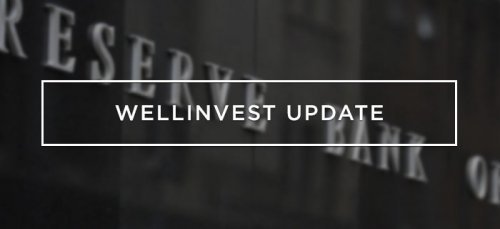
Statement by the Reserve Bank Board: Monetary Policy Decision
At its meeting today, the Board decided to leave the cash rate target unchanged at 4.35 per cent and the interest rate paid on Exchange Settlement balances unchanged at 4.25 per cent.
Inflation continues to moderate but remains high.
Recent information suggests that inflation continues to moderate, in line with the RBA’s latest forecasts. The headline monthly CPI indicator was steady at 3.4 per cent over the year to January, with momentum easing over recent months, driven by moderating goods inflation. Services inflation remains elevated, and is moderating at a more gradual pace. The data are consistent with continuing excess demand in the economy and strong domestic cost pressures, both for labour and non-labour inputs.
Higher interest rates are working to establish a more sustainable balance between aggregate demand and supply in the economy. Accordingly, conditions in the labour market continue to ease gradually, although they remain tighter than is consistent with sustained full employment and inflation at target. Wages growth picked up a little further in the December quarter, but appears to have peaked with indications it will moderate over the year ahead. Nevertheless, this level of wages growth remains consistent with the inflation target only on the assumption that productivity growth increases to around its long-run average. Inflation is still weighing on people’s real incomes and household consumption growth is weak, as is dwelling investment.
The outlook remains highly uncertain.
While there are encouraging signs that inflation is moderating, the economic outlook remains uncertain. The December quarter national accounts data confirmed growth has slowed. Household consumption growth remains particularly weak amid high inflation and the rise in interest rates. After recent declines, real incomes have stabilised and are expected to grow from here, which is expected to support growth in consumption later in the year.
Meanwhile, growth in unit labour costs remains very high. It has begun to moderate slightly as measured productivity growth has picked up in the past two quarters but whether this trend will be sustained is uncertain.
The central forecasts are for inflation to return to the target range of 2–3 per cent in 2025, and to the midpoint in 2026. Services price inflation is expected to decline gradually as demand moderates and growth in labour and non-labour costs eases. Employment is expected to continue to grow moderately, and the unemployment rate and the broader underutilisation rate are expected to increase a bit further.
While there have been favourable signs on goods price inflation abroad, services price inflation has remained persistent and the same could occur in Australia. There also remains a high level of uncertainty around the outlook for the Chinese economy and the implications of the conflicts in Ukraine and the Middle East. Domestically, there are uncertainties regarding the lags in the effect of monetary policy and how firms’ pricing decisions and wages will respond to the slower growth in the economy at a time of excess demand, and while the labour market remains tight. The outlook for household consumption also remains uncertain.
Returning inflation to target is the priority.
Returning inflation to target within a reasonable timeframe remains the Board’s highest priority. This is consistent with the RBA’s mandate for price stability and full employment. The Board needs to be confident that inflation is moving sustainably towards the target range. To date, medium-term inflation expectations have been consistent with the inflation target and it is important that this remains the case.
While recent data indicate that inflation is easing, it remains high. The Board expects that it will be some time yet before inflation is sustainably in the target range. The path of interest rates that will best ensure that inflation returns to target in a reasonable timeframe remains uncertain and the Board is not ruling anything in or out. The Board will rely upon the data and the evolving assessment of risks. The Board will continue to pay close attention to developments in the global economy, trends in domestic demand, and the outlook for inflation and the labour market. The Board remains resolute in its determination to return inflation to target.
2024
RBA Media Release, February 2024
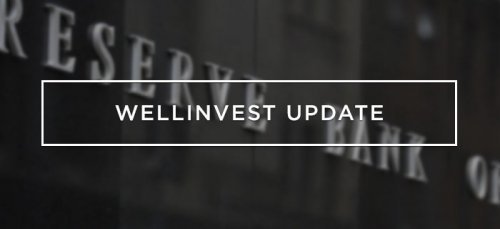
Statement by the Reserve Bank Board: Monetary Policy Decision
At its meeting today, the Board decided to leave the cash rate target unchanged at 4.35 per cent and the interest rate paid on Exchange Settlement balances unchanged at 4.25 per cent.
Inflation continues to moderate but remains high.
Inflation continued to ease in the December quarter. Despite this progress, inflation remains high at 4.1 per cent. Goods price inflation was lower than the RBA’s November forecasts. It has continued to ease, reflecting the resolution of earlier global supply chain disruptions and a moderation in domestic demand for goods. Services price inflation, however, declined at a more gradual pace in line with the RBA’s earlier forecasts and remains high. This is consistent with continuing excess demand in the economy and strong domestic cost pressures, both for labour and non-labour inputs.
Higher interest rates are working to establish a more sustainable balance between aggregate demand and supply in the economy. Accordingly, conditions in the labour market continue to ease gradually, although they remain tighter than is consistent with sustained full employment and inflation at target. Wages growth has picked up but is not expected to increase much further and remains consistent with the inflation target, on the assumption that productivity growth increases to around its long-run average. Inflation is still weighing on people’s real incomes and household consumption growth is weak, as is dwelling investment.
The outlook is still highly uncertain.
While there are encouraging signs, the economic outlook is uncertain and the Board remains highly attentive to inflation risks. The central forecasts are for inflation to return to the target range of 2–3 per cent in 2025, and to the midpoint in 2026. Services price inflation is expected to decline gradually as demand moderates and growth in labour and non-labour costs eases. Employment is expected to continue to grow moderately and the unemployment rate and the broader underutilisation rate are expected to increase a bit further.
While there have been favourable signs on goods price inflation abroad, services price inflation has remained persistent and the same could occur in Australia. There also remains a high level of uncertainty around the outlook for the Chinese economy and the implications of the conflicts in Ukraine and the Middle East. Domestically, there are uncertainties regarding the lags in the effect of monetary policy and how firms’ pricing decisions and wages will respond to the slower growth in the economy at a time of excess demand, and while the labour market remains tight. The outlook for household consumption also remains uncertain.
Returning inflation to target is the priority.
Returning inflation to target within a reasonable timeframe remains the Board’s highest priority. This is consistent with the RBA’s mandate for price stability and full employment. The Board needs to be confident that inflation is moving sustainably towards the target range. To date, medium-term inflation expectations have been consistent with the inflation target and it is important that this remains the case.
While recent data indicate that inflation is easing, it remains high. The Board expects that it will be some time yet before inflation is sustainably in the target range. The path of interest rates that will best ensure that inflation returns to target in a reasonable timeframe will depend upon the data and the evolving assessment of risks, and a further increase in interest rates cannot be ruled out. The Board will continue to pay close attention to developments in the global economy, trends in domestic demand, and the outlook for inflation and the labour market. The Board remains resolute in its determination to return inflation to target and will do what is necessary to achieve that outcome.
2023
RBA Media Release, December 2023
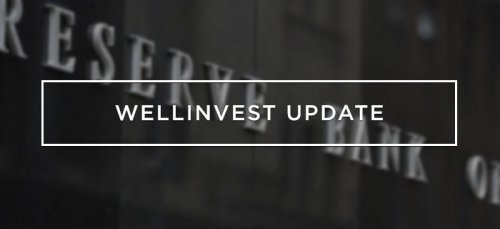
Statement by Michele Bullock, Governor: Monetary Policy Decision
At its meeting today, the Board decided to leave the cash rate target unchanged at 4.35 per cent and the interest rate paid on Exchange Settlement balances unchanged at 4.25 per cent.
Last month, the Board increased interest rates by 25 basis points, following a period of four months where it had held interest rates steady. This decision reflected the Board’s view that progress in bringing inflation back to the target range of 2 to 3 per cent was looking slower than earlier forecast. While the economy has been experiencing a period of below-trend growth, it was stronger than expected over the first half of the year. Underlying inflation was higher than expected at the time of the August forecasts, including across a broad range of services. Conditions in the labour market had eased but remained tight. Housing prices were continuing to rise across the country as was the number of new mortgages. Given this, the Board judged that the risk of inflation remaining higher for longer had risen and an increase in interest rates was therefore warranted to be more assured that inflation would return to target in a reasonable timeframe.
The limited information received on the domestic economy since the November meeting has been broadly in line with expectations. The monthly CPI indicator for October suggested that inflation is continuing to moderate, driven by the goods sector; the inflation update did not, however, provide much more information on services inflation. Overall, measures of inflation expectations remain consistent with the inflation target. Wages growth picked up in the September quarter but this was expected given that it captured the earlier Fair Work Commission decision on award wages. Wages growth is not expected to increase much further and remains consistent with the inflation target, provided productivity growth picks up. Conditions in the labour market also continued to ease gradually, although they remain tight.
Higher interest rates are working to establish a more sustainable balance between aggregate supply and demand in the economy. The impact of the more recent rate rises, including last month's, will continue to flow through the economy. High inflation is weighing on people’s real incomes and household consumption growth is weak, as is dwelling investment. Holding the cash rate steady at this meeting will allow time to assess the impact of the increases in interest rates on demand, inflation and the labour market.
Returning inflation to target within a reasonable timeframe remains the Board’s priority. High inflation makes life difficult for everyone and damages the functioning of the economy. It erodes the value of savings, hurts household budgets, makes it harder for businesses to plan and invest, and worsens income inequality. And if high inflation were to become entrenched in people’s expectations, it would be much more costly to reduce later, involving even higher interest rates and a larger rise in unemployment. To date, medium-term inflation expectations have been consistent with the inflation target and it is important that this remains the case.
There are still significant uncertainties around the outlook. While there have been encouraging signs on goods inflation abroad, services price inflation has remained persistent and the same could occur in Australia. There also remains a high level of uncertainty around the outlook for the Chinese economy and the implications of the conflicts abroad. Domestically, there are uncertainties regarding the lags in the effect of monetary policy and how firms’ pricing decisions and wages will respond to the slower growth in the economy at a time when the labour market remains tight. The outlook for household consumption also remains uncertain, with many households experiencing a painful squeeze on their finances, while some are benefiting from rising housing prices, substantial savings buffers and higher interest income.
Whether further tightening of monetary policy is required to ensure that inflation returns to target in a reasonable timeframe will depend upon the data and the evolving assessment of risks. In making its decisions, the Board will continue to pay close attention to developments in the global economy, trends in domestic demand, and the outlook for inflation and the labour market. The Board remains resolute in its determination to return inflation to target and will do what is necessary to achieve that outcome.
2023
RBA Media Release, November 2023
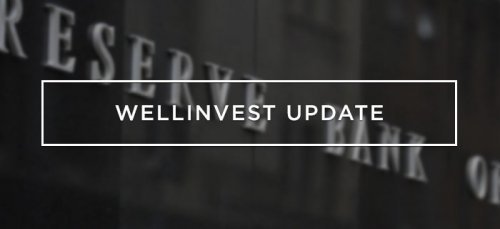
Statement by Michele Bullock, Governor: Monetary Policy Decision
At its meeting today, the Board decided to raise the cash rate target by 25 basis points to 4.35 per cent. It also increased the interest rate paid on Exchange Settlement balances by 25 basis points to 4.25 per cent.
Inflation in Australia has passed its peak but is still too high and is proving more persistent than expected a few months ago. The latest reading on CPI inflation indicates that while goods price inflation has eased further, the prices of many services are continuing to rise briskly. While the central forecast is for CPI inflation to continue to decline, progress looks to be slower than earlier expected. CPI inflation is now expected to be around 3½ per cent by the end of 2024 and at the top of the target range of 2 to 3 per cent by the end of 2025. The Board judged an increase in interest rates was warranted today to be more assured that inflation would return to target in a reasonable timeframe.
The Board had held interest rates steady since June following an increase of 4 percentage points since May last year. It had judged that higher interest rates were working to establish a more sustainable balance between supply and demand in the economy. Furthermore, it had noted that the impact of the more recent rate rises would continue to flow through the economy. It had therefore decided that it was appropriate to hold rates steady to provide time to assess the impact of the increase in interest rates so far. In particular, the Board had indicated that it would be paying close attention to developments in the global economy, trends in household spending, and the outlook for inflation and the labour market.
Since its August meeting, the Board has received updated information on inflation, the labour market, economic activity and the revised set of forecasts. The weight of this information suggests that the risk of inflation remaining higher for longer has increased. While the economy is experiencing a period of below-trend growth, it has been stronger than expected over the first half of the year. Underlying inflation was higher than expected at the time of the August forecasts, including across a broad range of services. Conditions in the labour market have eased but they remain tight. Housing prices are continuing to rise across the country.
At the same time, high inflation is weighing on people’s real incomes and household consumption growth is weak, as is dwelling investment. Given that the economy is forecast to grow below trend, employment is expected to grow slower than the labour force and the unemployment rate is expected to rise gradually to around 4¼ per cent. This is a more moderate increase than previously forecast. Wages growth has picked up over the past year but is still consistent with the inflation target, provided that productivity growth picks up.
Returning inflation to target within a reasonable timeframe remains the Board’s priority. High inflation makes life difficult for everyone and damages the functioning of the economy. It erodes the value of savings, hurts household budgets, makes it harder for businesses to plan and invest, and worsens income inequality. And if high inflation were to become entrenched in people’s expectations, it would be much more costly to reduce later, involving even higher interest rates and a larger rise in unemployment. To date, medium-term inflation expectations have been consistent with the inflation target and it is important that this remains the case.
There are still significant uncertainties around the outlook. Services price inflation has been surprisingly persistent overseas and the same could occur in Australia. There are uncertainties regarding the lags in the effect of monetary policy and how firms’ pricing decisions and wages will respond to the slower growth in the economy at a time when the labour market remains tight. The outlook for household consumption also remains uncertain, with many households experiencing a painful squeeze on their finances, while some are benefiting from rising housing prices, substantial savings buffers and higher interest income. And globally, there remains a high level of uncertainty around the outlook for the Chinese economy and the implications of the conflicts abroad.
Whether further tightening of monetary policy is required to ensure that inflation returns to target in a reasonable timeframe will depend upon the data and the evolving assessment of risks. In making its decisions, the Board will continue to pay close attention to developments in the global economy, trends in domestic demand, and the outlook for inflation and the labour market. The Board remains resolute in its determination to return inflation to target and will do what is necessary to achieve that outcome.
2023
RBA Media Release, October 2023
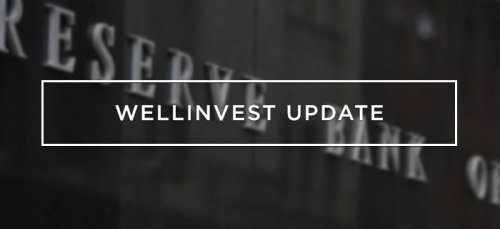
Statement by Michele Bullock, Governor: Monetary Policy Decision
At its meeting today, the Board decided to leave the cash rate target unchanged at 4.10 per cent and the interest rate paid on Exchange Settlement balances unchanged at 4.00 per cent.
Interest rates have been increased by 4 percentage points since May last year. The higher interest rates are working to establish a more sustainable balance between supply and demand in the economy and will continue to do so. In light of this and the uncertainty surrounding the economic outlook, the Board again decided to hold interest rates steady this month. This will provide further time to assess the impact of the increase in interest rates to date and the economic outlook.
Inflation in Australia has passed its peak but is still too high and will remain so for some time yet. Timely indicators on inflation suggest that goods price inflation has eased further, but the prices of many services are continuing to rise briskly and fuel prices have risen noticeably of late. Rent inflation also remains elevated. The central forecast is for CPI inflation to continue to decline and to be back within the 2–3 per cent target range in late 2025.
Growth in the Australian economy was a little stronger than expected over the first half of the year. But the economy is still experiencing a period of below-trend growth and this is expected to continue for a while. High inflation is weighing on people’s real incomes and household consumption growth is weak, as is dwelling investment. Notwithstanding this, conditions in the labour market remain tight, although they have eased a little. Given that the economy and employment are forecast to grow below trend, the unemployment rate is expected to rise gradually to around 4½ per cent late next year. Wages growth has picked up over the past year but is still consistent with the inflation target, provided that productivity growth picks up.
Returning inflation to target within a reasonable timeframe remains the Board’s priority. High inflation makes life difficult for everyone and damages the functioning of the economy. It erodes the value of savings, hurts household budgets, makes it harder for businesses to plan and invest, and worsens income inequality. And if high inflation were to become entrenched in people’s expectations, it would be very costly to reduce later, involving even higher interest rates and a larger rise in unemployment. To date, medium-term inflation expectations have been consistent with the inflation target and it is important that this remains the case.
The recent data are consistent with inflation returning to the 2–3 per cent target range over the forecast period and with output and employment continuing to grow. Inflation is coming down, the labour market remains strong and the economy is operating at a high level of capacity utilisation, although growth has slowed.
There are significant uncertainties around the outlook. Services price inflation has been surprisingly persistent overseas and the same could occur in Australia. There are also uncertainties regarding the lags in the effect of monetary policy and how firms’ pricing decisions and wages respond to the slower growth in the economy at a time when the labour market remains tight. The outlook for household consumption also remains uncertain, with many households experiencing a painful squeeze on their finances, while some are benefiting from rising housing prices, substantial savings buffers and higher interest income. And globally, there remains a high level of uncertainty around the outlook for the Chinese economy due to ongoing stresses in the property market.
Some further tightening of monetary policy may be required to ensure that inflation returns to target in a reasonable timeframe, but that will continue to depend upon the data and the evolving assessment of risks. In making its decisions, the Board will continue to pay close attention to developments in the global economy, trends in household spending, and the outlook for inflation and the labour market. The Board remains resolute in its determination to return inflation to target and will do what is necessary to achieve that outcome.
2023
RBA Media Release, August 2023
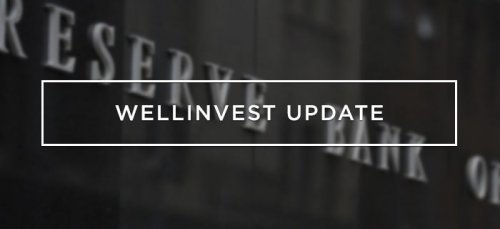
Statement by Philip Lowe, Governor: Monetary Policy Decision
At its meeting today, the Board decided to leave the cash rate target unchanged at 4.10 per cent and the interest rate paid on Exchange Settlement balances unchanged at 4.00 per cent.
Interest rates have been increased by 4 percentage points since May last year. The higher interest rates are working to establish a more sustainable balance between supply and demand in the economy and will continue to do so. In light of this and the uncertainty surrounding the economic outlook, the Board again decided to hold interest rates steady this month. This will provide further time to assess the impact of the increase in interest rates to date and the economic outlook.
Inflation in Australia is declining but is still too high at 6 per cent. Goods price inflation has eased, but the prices of many services are rising briskly. Rent inflation is also elevated. The central forecast is for CPI inflation to continue to decline, to be around 3¼ per cent by the end of 2024 and to be back within the 2–3 per cent target range in late 2025.
The Australian economy is experiencing a period of below-trend growth and this is expected to continue for a while. Household consumption growth is weak, as is dwelling investment. The central forecast is for GDP growth of around 1¾ per cent over 2024 and a little above 2 per cent over the following year.
Conditions in the labour market remain very tight, although they have eased a little. Job vacancies and advertisements are still at very high levels, although firms report that labour shortages have lessened. With the economy and employment forecast to grow below trend, the unemployment rate is expected to rise gradually from its current rate of 3½ per cent to around 4½ per cent late next year. Wages growth has picked up in response to the tight labour market and high inflation. At the aggregate level, wages growth is still consistent with the inflation target, provided that productivity growth picks up.
Returning inflation to target within a reasonable timeframe remains the Board’s priority. High inflation makes life difficult for everyone and damages the functioning of the economy. It erodes the value of savings, hurts household budgets, makes it harder for businesses to plan and invest, and worsens income inequality. And if high inflation were to become entrenched in people’s expectations, it would be very costly to reduce later, involving even higher interest rates and a larger rise in unemployment. To date, medium-term inflation expectations have been consistent with the inflation target and it is important that this remains the case.
The recent data are consistent with inflation returning to the 2–3 per cent target range over the forecast horizon and with output and employment continuing to grow. There are though significant uncertainties. Services price inflation has been surprisingly persistent overseas and the same could occur in Australia. There are also uncertainties regarding the lags in the operation of monetary policy and how firms’ pricing decisions and wages will respond to the slowing in the economy at a time when the labour market remains tight. The outlook for household consumption is also an ongoing source of uncertainty. Many households are experiencing a painful squeeze on their finances, while some are benefiting from rising housing prices, substantial savings buffers and higher interest income. In aggregate, consumption growth has slowed substantially due to the combination of cost-of-living pressures and higher interest rates.
Some further tightening of monetary policy may be required to ensure that inflation returns to target in a reasonable timeframe, but that will depend upon the data and the evolving assessment of risks. In making its decisions, the Board will continue to pay close attention to developments in the global economy, trends in household spending, and the outlook for inflation and the labour market. The Board remains resolute in its determination to return inflation to target and will do what is necessary to achieve that.
